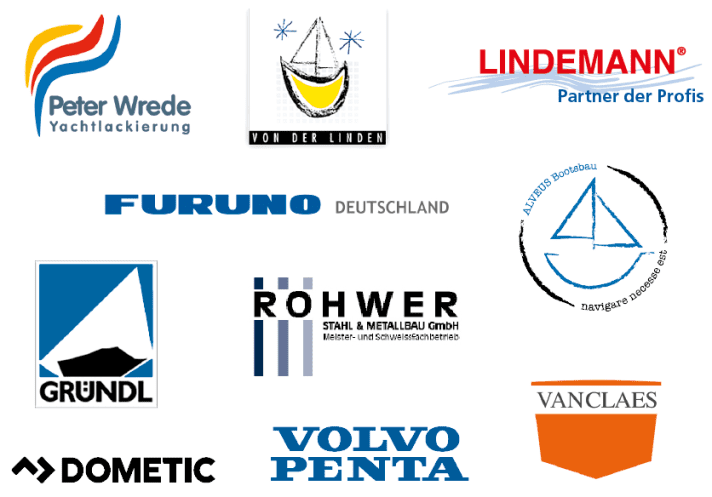





All episodes of the refit project:
- Part 1: Stocktaking
- Part 2: Replacing the rear view mirror
- Part 3: The underwater hull
- Part 4: GRP repairs
- Part 5: Antifouling coating
- Part 6: The motor foundation
- Part 7: The stringer system
- Part 8: The new engine
- Part 9: The new tank
- Part 10: The interior fittings
- Part 11: The interior work continues
- Part 12: The side panelling
- Part 13: Surface treatment and colour
What to do when wood has turned to compost and the engine foundation has become a total loss? No problem for us, the new engine will be bigger and more powerful than its predecessor anyway and for this reason alone needs a customised "stand". It should be solid, stable and "waterproof".
For the refit professionals from Alveus Bootsbau in Potsdam and the "Rheinische Frohnaturen" from M. u.H. von der Linden, Coosa is the first choice for building the foundation. Coosa composite panels are made from a polyurethane foam filled with continuous glass fibres and additionally reinforced with glass roving fabric. This means that Coosa can do everything that plywood can do, but is 40 per cent lighter and does not absorb moisture. This means that should it ever get damp, Coosa will never rot.
We need an 80 mm wide Coosa core in order to achieve strength and have sufficient options for bolting the engine mounts. The boat builders can manage with half the material thickness, i.e. 40 millimetres, for the floor beam in front of the engine bilge, which is pulled up to the cockpit floor.
Sandwich of Coosa panels forms the basis
The 80 mm cores are manufactured by hand. Four sheets of 20 are glued on top of each other with epoxy resin. It is important that the resin and hardener are mixed in an exact 5:1 ratio. The resin manufacturer supplies mini hand pumps for this purpose. Practical: The pump for the resin has a five times larger volume stroke than the hardener pump. If you constantly alternate one stroke from each pump into your mixing cup, you are always on the safe side as far as the mixing ratio is concerned. Once the mixture is correct, one side of the Coosa panels is spread evenly with the roller. For the other side, the resin-hardener mixture is thickened with filler. As far as mixing is concerned, it's a bit like baking a cake. In other words, if the "dough" is too thin, some "flour" (filler) must be added; if it is thicker than syrup, more "liquid" (resin) must be added. The finished mixture is spread onto the plates with a spatula.
Once the sandwich of panels and adhesive has been assembled, it is screwed together until it hardens in order to increase the contact pressure. Using a template, the exact position of the centreline is now marked on the mirror and drilled. A suitable tube is inserted through the hole and fixed in place with "plasticine". It is important that the tube runs through the mirror at right angles. Based on the centreline, which is represented by the tube, the installation dimensions from the engine manufacturer's drawing are transferred to the boat.
Important: The motor foundation must be fitted exactly
Now the players know exactly where the new foundation will be and can remove the last remnants of the old one with a "chisel" and belt sander. This is the only way to ensure proper lamination afterwards. Caution: always wear breathing and hearing protection when sanding fibreglass. Now use the bevelling stick to measure the angle (the bevel) between the boat floor and the engine foundation and mark it on the glued-together Coosa panels.
In the next step, the foundation plates are cut to size on the band saw and fitted into the boat at their future location. If everything fits, the two parts of the foundation are erected and stiffened with a framework of roof battens. This is the way to ensure dimensional accuracy. Finally, the inside of the transom and the motor foundations are laminated with six layers of 430 fabric and epoxy resin.
Why epoxy? Epoxy resin offers the absolute best adhesion to the existing polyester resin substrate (fuselage), it does not shrink, is solvent-free and is easy to work with, whereby the worker does not have to wear a breathing mask at all times. Once the laminate has hardened, the cut-out for the transom plate (the connection between the motor and the Z-drive), which is marked using the motor manufacturer's template, can be sawn out and drilled using professional tools.
Video of the refit project
The BOOTE Refit project is supported by


